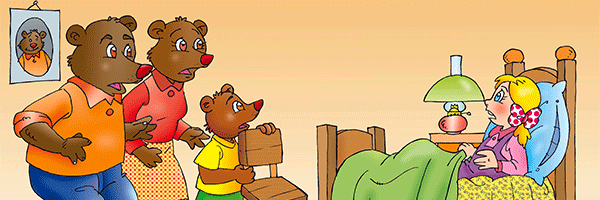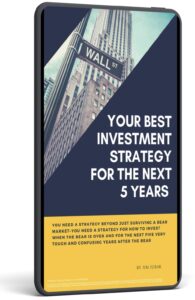 April 18, 2025
April 18, 2025
What You Need to Know Today:
Are they real or more vapor-tariffs?
Semiconductor chips and drugs are set to face higher duties, Trump told reporters at a news conference on Tuesday.“It’ll be 25% and higher, and it’ll go very substantially higher over the course of a year.” Asked if he had decided the rate of a threatened tariff on cars from overseas, Trump said he would “probably” announce that on 2 April, “but it’ll be in the neighborhood of 25%”. But are these “announcement’s real?

Politburo signals big boost to China’s economy
Words count. And they move stocks when they come from China’s President Xi Jinping and the Politburo ahead of the March session of parliament that will set the budget–and stimulus spending for the year. The words? The Politburo vowed to embrace a “moderately loose” monetary policy in 2025, according to the official Xinhua News Agency. That’s a huge shift from the “prudent” strategy that’s held for nearly 14 years. The last time China adopted a “moderately loose” monetary policy was in the Global Financial Crisis as part of a big stimulus package to prop up the economy.

Consumer debt soared in October–are consumers trying to beat the Trump tariffs?
U.S. consumer credit rose by $19.2 billion in October, smashing through the $10.1 billion consensus forecast. And surging from $3.2 billion in September, according to Federal Reserve data released Friday. One in three Americans are stockpiling daily necessities like toilet paper and non-perishable food out of fear that President-elect Donald Trump’s pledge to add tariffs to imported goods will lead to higher prices, according to a new survey by CreditCards.com

Saturday Night Quarterback says (on a Sunday), For the week ahead expect…
All eyes will be on the Consumer Price Index inflation report for November due out on the morning of Wednesday, December 11. It’s the last big inflation data dump before the Federal Reserve meets on December 18.

U.S. electricity demand set to soar–this is a very big deal
U.S. electricity demand could rise by128 gigawatts over the next five years, driven by data centers and manufacturing growth primarily in six regions of the country, according to a report published Thursday by Grid Strategies. That result is a five-fold increase in electric demand load forecasts from estimates just two years ago.

Jobs report locks in one more rate cut from the Fed
The U.S. economy added 227,000 jobs last month, the Labor Department reported Friday morning, December 6. In addition, revisions added 56,000 jobs to the totals for October and September. Which adds up to a strong recovery from the shocking low 12,000 new jobs initially reported for October. Initial analysis that the almost non-existant growth for October was due to hurricanes and strikes now looks correct. At the same time, the unemployment rate, which is calculated in a survey separate from that which produces the jobs total, ticked up to 4.2% from 4.1%. The jobs total and the unemployment rate were broadly expected by economists. The complete picture is of an economy showing a continued modest expansion. In my opinion, that’s enough to lead to a 25 basis point cut at its December 18 meeting in the Federal Reserve’s benchmark short-term interest rate from the current range of 4.50% to 4.75%. The CME FedWatch took today put the odds od a 25 basis point cut at the December meeting at 85.1%. That’s up from 66% odds a week ago

Step #8 in my Special Report: Sell DE, CAT and BHP tomorrow
Today I posted Step #8 in my Special Report: 8 Steps to Protect Your Portfolio from the Global Debt Bomb. I recommended selling Deere (DE), Caterpillar (CAT), and BHP Group (BHP) out of portfolios ahead of rising yields i the bond market. (In the case of Deere, I said I would keep my position in my long-term portfolio but sell the position in my 12-18 month portfolio.) Here’s what I posted in my Special Report
Live Market Report (20 minute delay)

If we’re in a growth recession, the upcoming earnings season is going to be wild
Right now economists are projecting that the U.S. economy didn’t slip into a recession in the second quarter that ended on June 30. But those same forecasts are looking for a further slowdown in economic growth in the quarter.
On July 3 the GDPNow forecast from the Atlanta Federal Reserve Bank put second quarter growth at an adjusted annual rate of 1.9%. That’s down from the model’s 2.2% forecast on Jone 30. And that rate of growth would be a further deceleration from the 2.0% growth rate (that was an upward revision from a first estimate of just a 1.3% growth rate) in the first quarter and the 2.6% growth in the fourth quarter of 2020. The very recent downward revision in the GDPNow forecast is a result of a drop in private domestic investment growth to 8.8% from 10.4%.So now recession–good news–but a further slowdown in the economy–expected with the Federal Reserve raising interest rates. And a continued drop in company profits.

Please Watch My New YouTube Video: Trend of the Week U.S. Economy Last Man Standing
Today’s Trend of the Week is U.S. Economy Last Man Standing. The U.S. economy is moving along at a surprisingly positive rate given the Fed’s repeated rate increases. Earlier in the year I expected a summer recession, but that no longer appears to be the case. We may see a recession later in the year, but as of now, the U.S. economy hasn’t dropped into a negative quarter–and the U.S. economy looks like the strongest in the world. Which my not be saying much. China is growing faster by the official numbers, but it needs to maintain at least a 5% growth rate to keep up with population growth. At the moment, with 4% growth, China’s unemployment rate for 16-24 year-olds is over 20%. This has led to country-wide dips in consumerism and has hammered the overall economy. We’re now seeing a slowdown in the EuroZone. The European Central Bank announced that they’re still seeing 6% inflation and raised interest rates by another 25 basis points. This policy is likely continue as the central bank tries to reach a 2% inflation rate. Growth in the EuroZone has been down for the last five months, and hit a new low in June. The Purchasing Managers Index (PMI) fell to 50.3. 50 is considered the break points between contraction and expansion. There’s a good possibility that the second quarter could be negative for the Eurozone, bringing the bloc closer to a recession. With China and the eurozone flailing economically, the U.S. economy is the last man standing.

Saturday Night Quarterback (on a Fourth of July eve Monday) says, for the week ahead expect…
I think the Friday, July 7, jobs report for June will be decisive in the Federal Reserve’s Jury 26 decision to raise/not-to-raise its benchmark interest rates. The CME FedWatch Tool current calculates the odds of a 25 basis point in create at 86.2%. The Bureau of Labor will release the Employment Situation Report on Friday. Economists are projecting that the economy added just 200,000 jobs in June. In May the economy added 339,000 jobs. Economists product that the unemployment rate will hold steady 3.7%.

Please WatchMy New YouTube Video: Quick Pick Eli Lilly
This week’s Quick Pick is Eli Lilly (NYSE: LLY). The worldwide explosion in diabetes has increased the demand for medicine to prevent the illness from advancing from Type 2 to Type 1 diabetes. In developing these drugs, it’s become clear these Type 2 diabetes prescriptions have also excellent potential for weight loss. Novo Nordisk’s semaglutide drug, the market leader, has been FDA approved for both uses and is marketed as Ozempic for diabetes and Wegovy for weight loss. Eli Lilly’s competitor drug, Mounjaro, is already approved by the FDA for Type 2 diabetes. That drug is likely to be approved for weight loss as well and looks like it may work even better than Novo Nordisk’s Wegovy. illy’s second diabetes drug, Retatrutide, is still in the pipeline and just reported Phase clinical results showed a 24% loss of body weight after 11 months. Th drug still has to go into Phase III trials but it is likely to be approved. Lilly’s stock has a 1% yield and is trading at a trailing 12 month PE of 72, so this stock is not cheap. I’ve had this stock in my Jubak Picks portfolio since November 20, 2022 and it’s up about 34% since then, but I believe we can expect another 20% to the upside with the approval of their drugs in the pipeline. The relatively low risk with a likely 20% return makes this a very attractive stock to me.

What does the Federal Reserve have to do to slow the U.S. consumer?
This morning all the way in New York I could hear the gnashing of teeth from Jerome Powell’s office at the Federal Reserve. “What do we have to do to slow consumer spending in the Untied States?” he cried after this morning’s economic data. Today the Commerce Department sharply raised its judgement on first quarter GDP growth. The last revision to the data showed the U.S. economy growing at a 2% annual rate from January through March. That was a huge step up from the 1.3% growth repoRrted in the previous GDP estimate.

Please Watch My New YouTube Video: The Long Hot Summer and Natural Gas
Today’s video is The Long Hot Summer and Natural Gas. If you’ve been following the weather, you know about the huge heat bubble in Texas where temperatures have reached 120 degrees. High temperatures combined with humidity of around 80% can cause serious health problems and even death. The National Weather Service expects this weather to continue and to spread to other parts of the United States, resulting in more and more people staying inside with the air conditioning cranked all the way up. This spike in temperatures is creating a similar spike in natural gas prices. On June 26, we hit a 16-week high for natural gas prices, and July natural gas futures (for July delivery) have been up 14 out of the last 17 sessions. This price surge has two causes ad is operating on two time frames. In the immediate term, the increased air conditioning use stresses the grid, leading to a reliance on natural gas back-ups to supply the energy needed to cover these demand peaks. This, of course, creates a lot more demand for natural gas in the short term. The second thing is a surprising change in long-term thinking about the future of natural gas. I’m seeing a new wave of 20-year supply contracts from places like China and Japan, suggesting countries are thinking that natural gas has a longer future as a transitional fuel as the world moves toward more sustainable energy sources. The two stocks I would look at here are Cheniere Energy, (LNG) and United States Natural Gas Fund, (UNG). Cheniere is up 6% in the last month and is a good way to play the long-term trend in natural gas use. UNG hit a potential bottom in June and is up 16% in the last month. The bigger gain is a result of the ETF being hammered due earlier in the year. UNG is a far more volatile buy, with much higher risk, so if you’re uncomfortable with risk, stick with the more modest but more predictable gains from Cheniere.

What comes after Goldilocks?
Investors and traders have been riding a Goldilocks market that has rested on a belief that all news is good news. There are signs that belief is facing challenges that might, just might, lead to a replacement of Goldilocks with some other narrative. Right now, the golden child is still resting peacefully at the Three Bears’ house with a stomach full of “just right” porridge, but sentiment in the last week has at least been willing to countenance the possibility that some bad news is bad news. And, I can see a lurking suspicion in the market that may be in the weeks to come all news if bad news.

U.S. heat wave to expand–but it’s not just a U.S. problem
Heat advisories now stretch from northern Florida to southern New Mexico, and excessive-heat warnings have been issued for much of Texas and parts of New Mexico and Arizona and along the Gulf Coasts of Louisiana, Mississippi and Alabama. New Orleans is included in the zone of greatest heat risk, with actual air temperatures around 100 degrees and humidity that will push heat indexes to 115 degrees. Excessive-heat watches have been posted for the lower Mississippi Valley and include Memphis and Nashville; Huntsville and Birmingham; Jackson, Mississippi; Little Rock, Arkansas; and Poplar Bluff, Missouri. “Extreme heat and humidity will significantly increase the potential for heat-related illnesses,” cautioned the National Weather Service, “particularly for those working or participating in outdoor activities.” The heat will relent somewhat into early next week for portions of the Southeast and Mid-South, but there is no immediate end in sight for Texas, where blistering and brutal conditions look to continue as a heat doe lingers over Texas. And this is only the latest U.S. manifestation of a global problem.

Please Watch My New YouTube Video: China’s Troubling Economic Trend
Today’s Trend of the Week is China’s Troubling Economic Trend. This graduation season is highlighting the economic problems China is facing. The 16-24-year-old Chinese demographic went to college as a way of delaying entering the job market during COVID, with the expectation of a guaranteed job upon graduating. The bad news is those jobs have not materialized. Unemployment for the 16-24 year age group was up to 20.8% in May, even higher than April’s shocking number. These Chinese college graduates have recognized this problem and have started a movement called “lying flat.” These potential consumers, they say, will not be buying houses, or cars but instead, will cut consumption. This negative view of the future trend in the economy has spread to all demographics and has led to people hoarding cash. The People’s Bank of China has cut short-term interest rates and the state council has suggested another stimulus package is coming. These factors could give Chinese stocks a bump up, but won’t get to the heart of the economic problem or bring the country’s growth above 5%. I’ve switched my international diversification to South Korea from China on JubakAM.com because I believe this economic trend is a long-term issue and that these problems are deeply embedded in the Chinese economy.

Is Adobe an artificial intelligence stock? Market certainly thinks so
Adobe’s recent earnings report and guidance leave investors, at least those of us still paying any attention at all to valuation, in a bit of a quandary. Do we sell Adobe on that lackluster forecast for earnings and revenue growth over the next two quarters (and what looks like a stretch, very stretched valuation) or do we hold on with the hope that the market continues its love affair with everything AI?

Saturday Night Quarterback says, For the week ahead watch…
Watch to see if/when the collapse of asset prices in the commercial real estate sector starts to create problems for the banking system as a whole. About $18 billion of office buildings were considered distressed at the end of March, MSCI Real Assets said in a report Thursday, estimating almost $43 billion of offices are at risk of default. U.S. office buildings are unlikely to regain their peak pre-pandemic values until at least 2040 as demand for desk space weakens, according to a forecast by Capital Economics. Values are expected to plunge 35% from the peak by the end of 2025 and take an additional 15 years or more to recover as hybrid and remote work reshape real estate, the London-based research firm reported Thursday. As extreme as that projection may seem it mirrors the collapse in the real estate market for shopping malls as e-commerce gobbled up consumers’ dollars. The grimmest part of that projection of a continued decline in building prices and for a long, long recovery is that it argues that the current extend and pretend strategy won’t be enough to carry the sector over the abyss. Many owners of distressed buildings have adopted extend and pretend–a strategy of rolling over the loans on a building while everyone pretends that the value of the building is still high enough to support the new loan.

There’s a huge debate on the direction of lithium prices for the rest of 2023
Spot lithium carbonate prices (for battery-grade lithium) in China are up 92% from a 19-month low in April. So now what?

Adding Generac as a short-term trade to my Volatility Portfolio
I’ve got major questions about Generac’s (GNRC) long-term growth. The company, the dominant player in the market for residential backup electric generators (with about 4 times the market share–or about 75% of the market–of its nearest competitor) faces big questions, in my opinion, about its long-term strategy and its ability to grab significant revenue in the clean energy market where it faces competition from larger companies, more established in the market, such as SolarEdge (SEDG) and Enphase (ENPH). But in the short run? Say, the next two or maybe three (at the outside) months, I say this is a stock that will ride summer storms and heat waves to gains. Especially, if as I project, the company delivers lackluster quarterly earnings when it reports on August 2, but gives very positive guidance for the next quarter or two

Please Watch My New YouTube Video: Quick Pick First Quantum Minerals
This week’s Quick Pick is First Quantum Minerals (FQVL). I’ve talked about copper as an equity kicker in gold mining stocks in a previous video. Barrick, a huge gold producer, is also a significant copper producer and is looking to expand its copper production. The company is currently in “informal talks” with First Quantum Minerals. Year to date, First Quantum Minerals is up 21% and 34% in the last three months, so it definitely shows good short-term momentum. In the long term, copper demand will see tremendous growth in the global climate change economy, including in electric vehicle production. The other benefit here is copper and, of course, gold is a good hedge against inflation which I predict will continue higher than the Federal Reserve and consumers would like for quite some time. Put copper, with its growth potential, together with gold, with its role as an inflation hedge, in one mining stock and you’re starting to look at something good.

Please Watch My New YouTube Video: Inflation Deserves a Bigger Role in Your Portfolio
Inflation deserves a bigger role in your portfolio. This vase of peonies reminds me of my first summer job: picking Japanese beetles off of my uncle’s peonies. He would offer what sounds like a not-so-generous salary of 25 cents per jar of dead beetles. But remember that’s 25 cents in 1960 or so. In thinking about inflation, I researched how much 25 cents in 1960 would be equivalent to today. 25 cents in 1960 amounts to $2.53 a jar. Still not terribly generous, but better. $100 in 1960 would be worth $1009 today, a ten-fold increase due to inflation. The Fed is still at work to stem inflation, but investors should note that there are some prices that the central bank can’t control. Inflation is built into the global climate economy with disruptions in agriculture, and new kinds of energy production (which will require higher costs), supply chain issues, not to mention that climate change is making some previously habitable places uninhabitable. All these problems will lead to extraordinary sources of inflation that are not susceptible to central bank policies. In order to hedge that inflation, make sure your portfolio, especially if it’s a long-term portfolio, has positions in things like gold or copper and lithium which will be in high demand and short supply in the next decade (at least.)

Did a Powell deal with the inflation hawks on a June pause guarantee a a 25 basis point increase in interest rates at the July 26 meeting?
Recently former Treasury Secretary Larry Summers has been saying that the June pause in interest rates and a simultaneous increase in the end of the year DotPlot interest rate projections to 5.6% only makes sense if Fed chair Jerome Powell cut a deal with the central bank’s inflation hawks that guarantees a 25 basis point interest rate increase at the July 26 meeting.

Buying Zimmer Biomet for the long-term 50 Stocks Portfolio tomorrow
I made Zimmer Biomet (ZBH) Pick #6 in my “10 Stocks for Your Core Portfolio.” Tomorrow, June 21, I’ll add it to my long-term 50 Stocks Portfolio.

Please Watch My New YouTube Video: Trend of the Week Which is it? OK Growth in the U.S. or Not Great Growth Globally?
Today’s Trend of the Week is Which is it? OK Growth in the U.S. or Not Great Growth Globally? The U.S. market is rallying and the rally even expand from the narrow nine stocks that have been driving up the indexes. The consensus is the U.S. economy will avoid a recession, the Fed will continue to pause rate hikes, and the U.S. economy as a whole is in decent shape. The problem is that the global economy presents a completely different story with asset values pricing in slowing growth. This shows up most clearly in oil prices, which have been in a downward trend. On June 13, West Texas Intermediate was selling below $70 a barrel, and Brent was down to 74.57. Goldman Sachs has cut its end-of-the-year oil price forecast by about 10%. This cut assumes continued lower demand from China and a supply glut, especially from Russia, as that country produces above agreed-upon caps in an effort to fund its war in Ukraine. If you own oil stocks right now, confirm that the ones in your portfolio can continue to make money at $70 a barrel (at least enough to cover dividends). I’d note the lowest cost source in the United States is in the Permian Basin. Companies like Pioneer National Resources and Devon Energy are focused on production from that region.

Look for end of the quarter “window dressing”/rebalancing wars
I expect the end of the second quarter to be volatile as two contrary trends battle it out to set market direction.

Selling ConocoPhillips tomorrow on increased Russian oil refinery production
I’m holding onto oil stocks that pay big dividends such as Pioneer Natural Resources (PXD), at 11.22%, and Devon Energy (DVN), at 9.06%, but I lightening up on my oil exposure by selling ConocoPhillips (COP) out of my Jubak Picks Portfolio tomorrow, June 20. The stock pays a dividend of just 2.29%.



